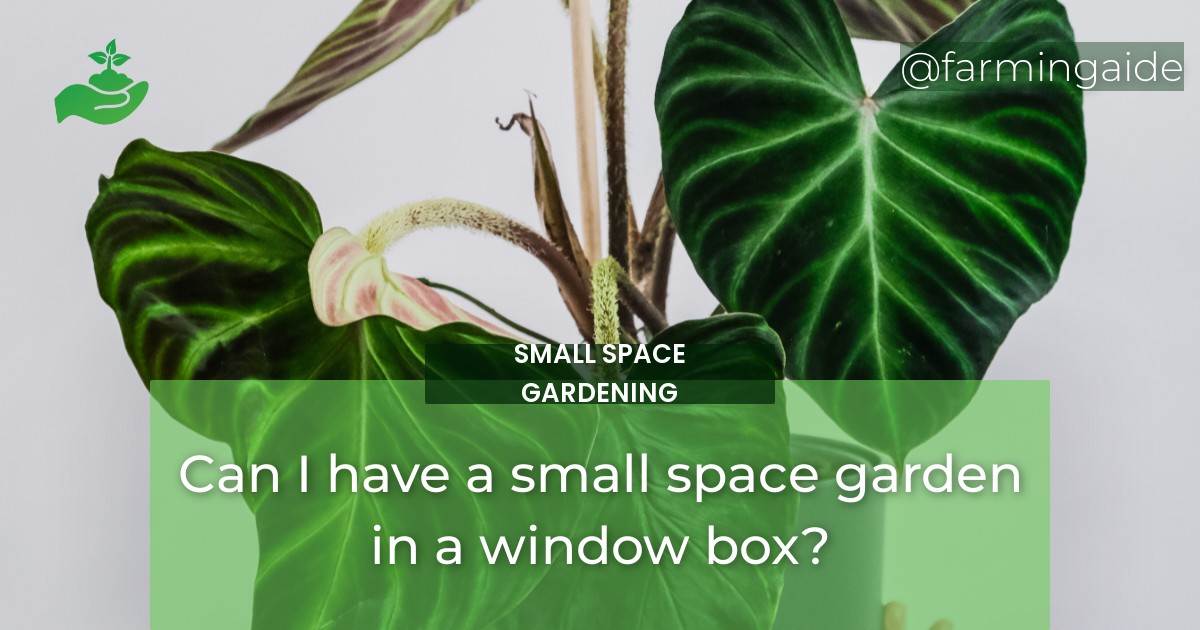Yes, you can have a small space garden in a window box. Window box gardening in small areas has become increasingly popular, especially for urban dwellers and those with limited space but still want to enjoy the benefits of gardening. A small space window box garden is a great way to grow your favorite plants, herbs, and vegetables without requiring a large outdoor space. In this article, we will explore the benefits of window box gardening, how to choose the right window box, soil and plant selection, window box planting techniques, and creative window box ideas.
Benefits of Window Box Gardening
Space-saving
One of the most significant benefits of window box gardening is the space-saving aspect. Window boxes take up very little space and are perfect for small apartments or balconies. They can also be placed on windowsills, railings, or hung from a balcony, maximizing your gardening space.
Accessibility
Another benefit of window box gardening is that it is easy to access your plants. Unlike traditional gardens, you don’t have to bend down or get on your hands and knees to maintain your plants. With a window box garden, you can easily water, prune, and harvest your plants without any back strain.
Cost-effective
Window box gardening is also a cost-effective way to garden. You don’t need to spend a lot of money on gardening tools or soil. Plus, you can grow your own herbs and vegetables, saving you money on groceries in the long run.
Aesthetic Appeal
Window box gardens are not only practical but also add aesthetic appeal to your home. They come in various styles and materials, such as metal, wood, or plastic, and can match the style of your home. You can also choose from a variety of plants suitable for small window boxes to create a beautiful and colorful display.
Choosing your Window Box
Material
When choosing a window box, consider the material it is made from. Wooden window boxes are popular and can give a rustic look to your garden, but they require more maintenance than plastic or metal window boxes. Plastic and metal window boxes are durable and low maintenance but may not have the same aesthetic appeal as wooden ones.
Size
Window boxes come in different sizes, so choose one that fits your window or balcony. A small window box may be suitable for herbs or small vegetables, while a larger one may be required for larger plants, such as tomatoes or peppers.
Drainage
Good drainage is essential for window box gardening. Look for window boxes with drainage holes or add them yourself. You can also place a layer of gravel or rocks at the bottom of the window box to improve drainage.
ALSO READ
Soil and Plant Selection
Soil
Choosing the right soil is crucial for window box gardening success. Use a high-quality potting mix that is lightweight and airy, allowing for good drainage. Add compost or organic matter to improve soil fertility.
Plant Selection
When selecting plants for your window box, consider the amount of sunlight they require and their size. Some plants suitable for small window boxes include:
- Herbs: basil, parsley, cilantro, thyme
- Vegetables: lettuce, radishes, cherry tomatoes, peppers
- Flowers: pansies, petunias, marigolds, impatiens
Window Box Planting Techniques
Preparing the Window Box
Before planting your window box, fill it with soil, leaving some space at the top for watering. You can also add slow-release fertilizer to the soil to provide nutrients to your plants throughout the season.
Plant Spacing and Arrangement
When planting your window box, consider the spacing between plants. Follow the instructions on the plant tags and leave enough space for each plant to grow. Arrange taller plants in the back and shorter ones in the front for a beautiful display.
Watering and Maintenance
Water your window box regularly, especially during hot weather. Use a watering can or hose with a gentle spray to avoid damaging the plants or soil. Remove dead or damaged leaves and flowers to encourage new growth.
ALSO READ
Creative Window Box Ideas
Herbs and Spices
Window boxes are perfect for growing herbs and spices. You can create an herb garden by planting basil, parsley, cilantro, and thyme. Use the herbs in your cooking to add flavor to your dishes.
Vegetables
You can also grow vegetables in your window box, such as lettuce, radishes, cherry tomatoes, and peppers. These vegetables are perfect for salads and can be harvested throughout the season.
Flowers
Flowers add color and beauty to your window box garden. Try planting pansies, petunias, marigolds, or impatiens for a stunning display. You can also mix and match different flowers for a beautiful and unique look.
Conclusion
Window box gardening is a great way to enjoy gardening in small spaces. By following these tips, you can create a beautiful and thriving window box garden. Choose the right window box, soil, and plants, and use proper planting techniques and maintenance to ensure your garden’s success.


